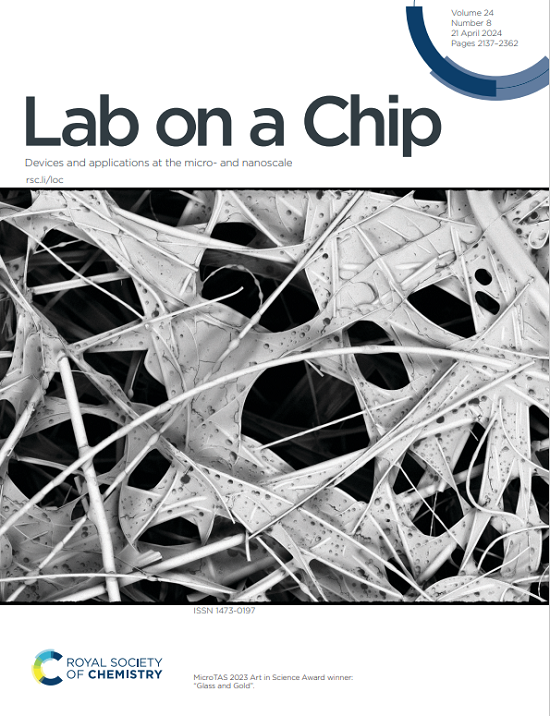颗粒微凝胶中的工程神经网络,在芯片上激活生物打印的癌症类器官。
IF 6.1
2区 工程技术
Q1 BIOCHEMICAL RESEARCH METHODS
引用次数: 0
摘要
类器官模型对于体外研究器官过程是无价的,提供了前所未有的复制器官功能的能力。尽管最近的进展增加了它们的细胞复杂性,但类器官通常缺乏关键的特化细胞类型,如神经元,限制了它们完全模拟器官功能和功能障碍的能力。由于控制神经和器官发育的非同步生物线索,神经支配类器官仍然是一个重大挑战。在这里,我们提出了一个多功能的器官芯片平台,旨在刺激不同组织类型的类器官。我们的策略能够开发受神经支配的颗粒水凝胶组织结构,随后依次添加类器官。微流控装置的特点是一个开放的组织腔,可以很容易地使用标准移液或先进的生物打印技术进行操作。设计用于容纳大于50 μm的任何材料的微凝胶,该腔室为构建可定制的水凝胶环境提供了灵活性。类器官和其他颗粒可以在使用吸气辅助生物打印的任何阶段精确地引入设备。为了验证这个平台,我们证明了小鼠上颈神经节(mSCG)神经元的成功生长,以及该平台在前列腺癌球体和患者源性肾细胞癌类器官的神经支配中的有效性。该平台为生成复杂的神经支配类器官提供了一个强大且适应性强的工具,为更准确的器官发育、功能和疾病的体外模型铺平了道路。本文章由计算机程序翻译,如有差异,请以英文原文为准。
Engineering neuronal networks in granular microgels to innervate bioprinted cancer organoids on-a-chip.
Organoid models are invaluable for studying organ processes in vitro, offering an unprecedented ability to replicate organ function. Despite recent advancements that have increased their cellular complexity, organoids generally lack key specialized cell types, such as neurons, limiting their ability to fully model organ function and dysfunction. Innervating organoids remains a significant challenge due to the asynchronous biological cues governing neural and organ development. Here, we present a versatile organ-on-a-chip platform designed to innervate organoids across diverse tissue types. Our strategy enables the development of innervated granular hydrogel tissue constructs, followed by the sequential addition of organoids. The microfluidic device features an open tissue chamber, which can be easily manipulated using standard pipetting or advanced bioprinting techniques. Engineered to accommodate microgels of any material larger than 50 μm, the chamber provides flexibility for constructing customizable hydrogel environments. Organoids and other particles can be precisely introduced into the device at any stage using aspiration-assisted bioprinting. To validate this platform, we demonstrate the successful growth of primary mouse superior cervical ganglia (mSCG) neurons and the platform's effectiveness in innervating prostate cancer spheroids and patient-derived renal cell carcinoma organoids. This platform offers a robust and adaptable tool for generating complex innervated organoids, paving the way for more accurate in vitro models of organ development, function, and disease.
求助全文
通过发布文献求助,成功后即可免费获取论文全文。
去求助
来源期刊

Lab on a Chip
工程技术-化学综合
CiteScore
11.10
自引率
8.20%
发文量
434
审稿时长
2.6 months
期刊介绍:
Lab on a Chip is the premiere journal that publishes cutting-edge research in the field of miniaturization. By their very nature, microfluidic/nanofluidic/miniaturized systems are at the intersection of disciplines, spanning fundamental research to high-end application, which is reflected by the broad readership of the journal. Lab on a Chip publishes two types of papers on original research: full-length research papers and communications. Papers should demonstrate innovations, which can come from technical advancements or applications addressing pressing needs in globally important areas. The journal also publishes Comments, Reviews, and Perspectives.
 求助内容:
求助内容: 应助结果提醒方式:
应助结果提醒方式:


